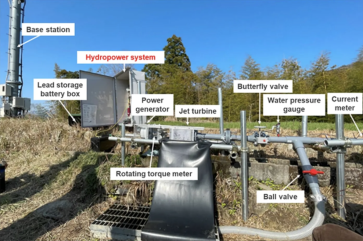
NTT DOCOMO, INC. has begun Japan’s first demonstration of a self-powered hydropower cellular base station. The experiment uses DOCOMO’s hydroelectric power-generation system and a jet turbine developed by Professor Yukihiro Shimatani from the Prefectural University of Kumamoto. The initiative aims to validate the feasibility of powering base stations with water from irrigation canals as a cost-effective and sustainable solution for rural mobile networks.
The experiment seeks to pave the way for integrating hydropower systems into DOCOMO’s mobile communications infrastructure by March 2025.
The jet turbine features a combined nozzle and turbine design, allowing it to be produced with a 3D printer. This design simplifies the generation of electricity by using a water jet to drive the turbine. The system converts this electricity into a form suitable for base stations and transmits data on electric current, voltage, power, water flow, and pressure to DOCOMO’s Energy Management System (EMS). This platform monitors and controls the power supplied to the base station and visualizes the CO2 reduction achieved.
While DOCOMO’s green base stations primarily utilize solar power, this hydropower initiative targets locations where solar panels are not feasible.
DOCOMO aims to reach net-zero greenhouse gas emissions from its operations by 2030 and across its entire supply chain by 2040. The company plans to increase its use of renewable energy to support its decarbonization goals.
The experiment will run for approximately one year, starting May 30, 2024.


